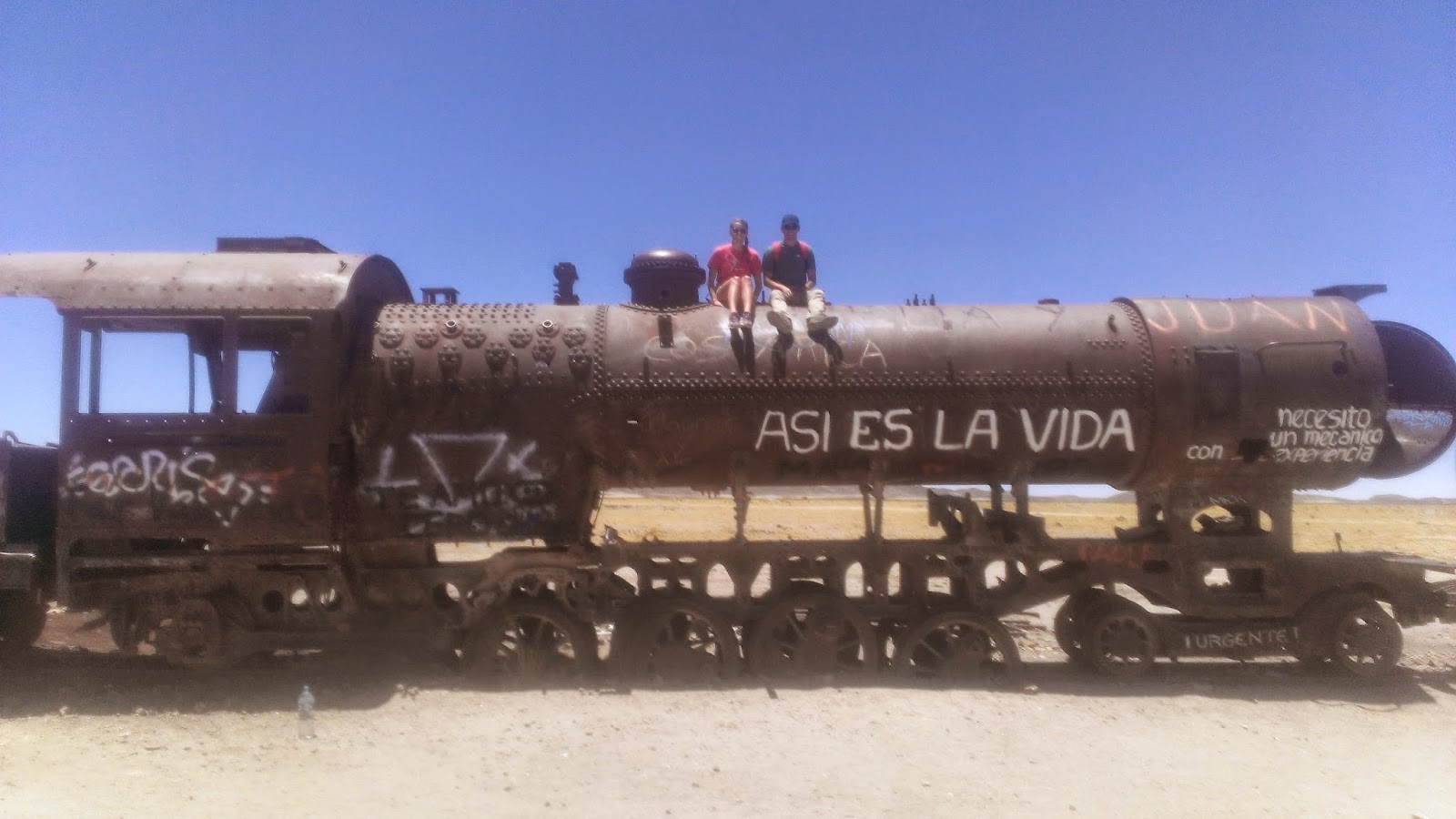We got over the border from Bolivia into Chile with no problems. We found ourself in the town of San Pedro de Atacama in the middle of the Atacama desert, the driest desert in the world. The first order of business was finding a hostel. Compared to Bolivian prices, everything in Chile is unbelievably expensive (although most stuff is still cheaper than the U.S.) The cost for a hostel seemed way too expensive so we pulled out our tent and camped for about $8 each (camping in Chile cost us more than a hotel room in Bolivia!) No matter, I was happy to be back in Chile.
You can do all sorts of awesome tours and excursions out into the desert in San Pedro. There are hot springs and amazing valleys and canyons and mountains, it is a really cool place. However, we were a little "toured out" from our 3 days in the Salt Flats and I had already seen a lot of it anyway (because I spent a weekend there last time) so we decided to just take it easy for a day and then hit the road for Santiago. Originally, I had wanted to make several stops on the way down from San Pedro to Santiago, but we were starting to feel really pressed for time. Instead, we got a direct bus and headed out the next day. It takes 23 hours to reach Santiago, so by the time we pulled into the bus terminal we were REALLY happy to be there and to get off the bus. The bus ride was really not bad though, except they played crappy movies the whole time. The icing on the cake was when they played the movie Godzilla for the SECOND time. Luckily we only had to watch part of it the second time because we arrived in Santiago.
We spent 6 days in Santiago, and it was so much fun. We stayed with my friend from study abroad who now lives there, Cara, and her Spanish boyfriend, Xabi. They were amazing hosts and we were so happy to take a break from hostels for a bit.
The first day we got in, we chatted with Cara and Xabi for awhile and then went and visited my host family for "once" (pronounced "own-say"). Once is a uniquely Chilean thing. Chileans eat dinner really late, around 9 or 10, so between 3-6pm everyone sits down for a small meal, usually just tea or coffee and bread or crackers and jam. It was so fun to see them again. When I left Santiago, Cristobal was only 12 years old and now he is 14. I've seen pictures on Facebook so I knew he would look older and be taller, but I was not ready for the man voice he greeted me with! Anyway it was awesome seeing them again. They don't speak much English, but Keegan did a great job keeping up with the conversation in Spanish. It was really fun.
The next two days we slept in pretty late and I gave Keegan the whirlwind tour of Santiago. We went to La Vega, which is a giant market. We got Terremotos at La Piojera, the oldest bar in Santiago. (Terremotos, "earthquakes", are a drink made of wine and pineapple sorbet. They call them terremotos because they are highly alcoholic but don't taste very strong and drinking them leads people to fall on the floor like in an earthquake.) We saw the main plaza, Plaza de Armas, but it was under construction. The rest of the time we just walked through some of my favorite neighborhoods and parks near the city center and stopped at all my favorite restaurants and ice cream shops along the way.
One day we jogged up to the Virgen statue that overlooks Santiago
View from the top
Candles lit at the church at the top
We also spent one night out in Valparaiso, a port city about an hour by bus from Santiago. We stayed on a nice hostel with an amazing breakfast. We went to a brewery and just generally explored the town. Valparaiso is known for its colorful buildings and beautiful grafitti murals.
We spent our last days in Santiago preparing for our trip to Patagonia. Food in Santiago is much cheaper and more plentiful than down south so we bought almost everything we needed for the trip in Santiago.
Our last night in town, Cara and Xabi invited us to go with them to a Chilean-style asado with some guys from Xabj's soccer team. An asado is basically just a barbecue where massive quantities of meat are cooked and consumed. They are awesome and very Chilean. Again, everyone there spoke almost exclusively Spanish except us and Cara, but Keegan did great keeping up with the conversations.
The next day we made the final packing preparations, said good bye to Cara and Xabi, and hopped on a plane bound for Punta Arenas, the closest airport to Patagonia. (Thankfully, we had decided ahead of time to take the 4 hour flight instead of the 30-40 hour bus ride.) Staying in Santiago for so long totally rejuvenated us. We had awesome hosts, we ate tons of great food and overall just had a really wonderful time. I was so happy to be back, even just for a short while.

















































